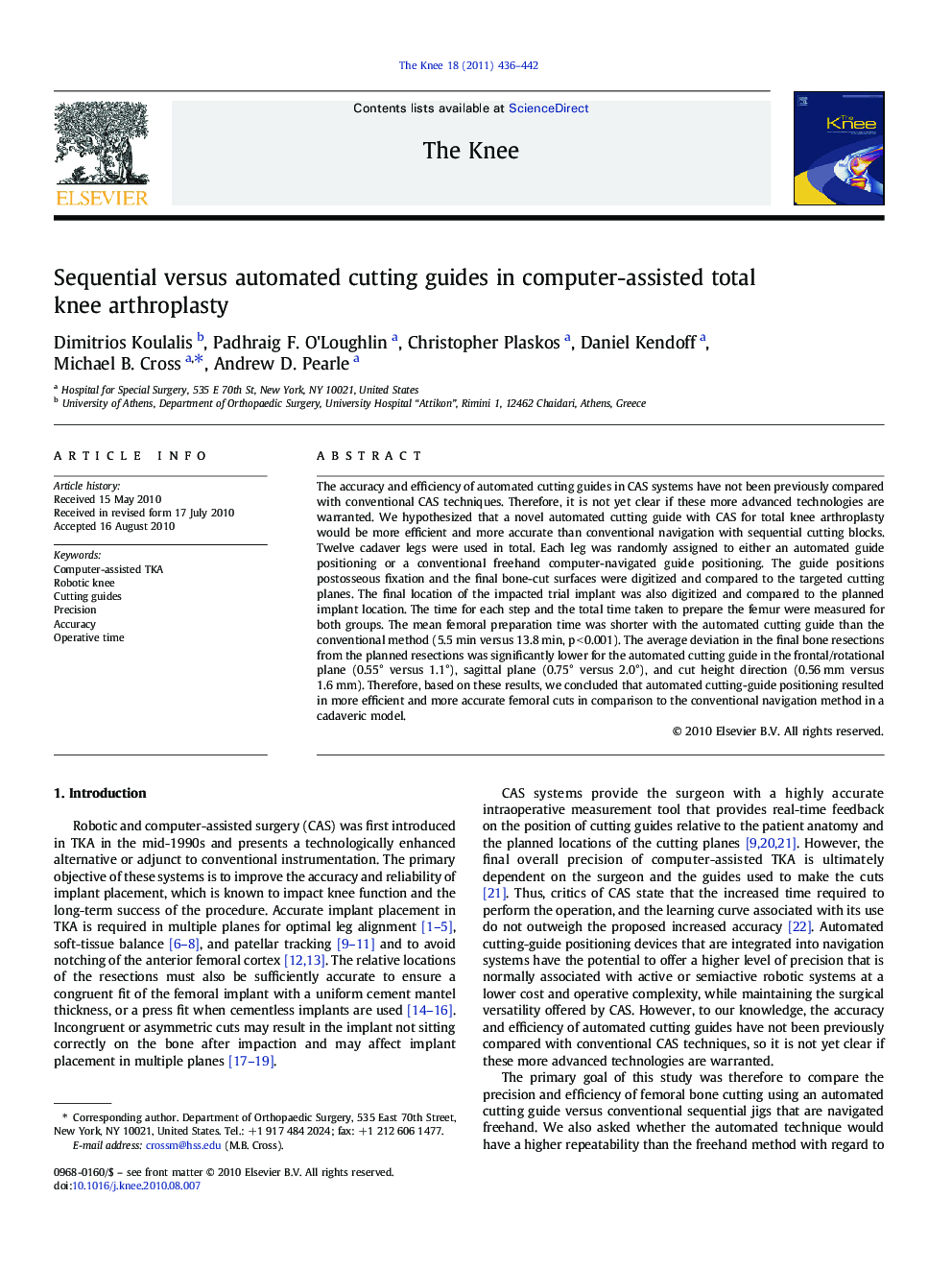| Article ID | Journal | Published Year | Pages | File Type |
|---|---|---|---|---|
| 4077704 | The Knee | 2011 | 7 Pages |
The accuracy and efficiency of automated cutting guides in CAS systems have not been previously compared with conventional CAS techniques. Therefore, it is not yet clear if these more advanced technologies are warranted. We hypothesized that a novel automated cutting guide with CAS for total knee arthroplasty would be more efficient and more accurate than conventional navigation with sequential cutting blocks. Twelve cadaver legs were used in total. Each leg was randomly assigned to either an automated guide positioning or a conventional freehand computer-navigated guide positioning. The guide positions postosseous fixation and the final bone-cut surfaces were digitized and compared to the targeted cutting planes. The final location of the impacted trial implant was also digitized and compared to the planned implant location. The time for each step and the total time taken to prepare the femur were measured for both groups. The mean femoral preparation time was shorter with the automated cutting guide than the conventional method (5.5 min versus 13.8 min, p < 0.001). The average deviation in the final bone resections from the planned resections was significantly lower for the automated cutting guide in the frontal/rotational plane (0.55° versus 1.1°), sagittal plane (0.75° versus 2.0°), and cut height direction (0.56 mm versus 1.6 mm). Therefore, based on these results, we concluded that automated cutting-guide positioning resulted in more efficient and more accurate femoral cuts in comparison to the conventional navigation method in a cadaveric model.
